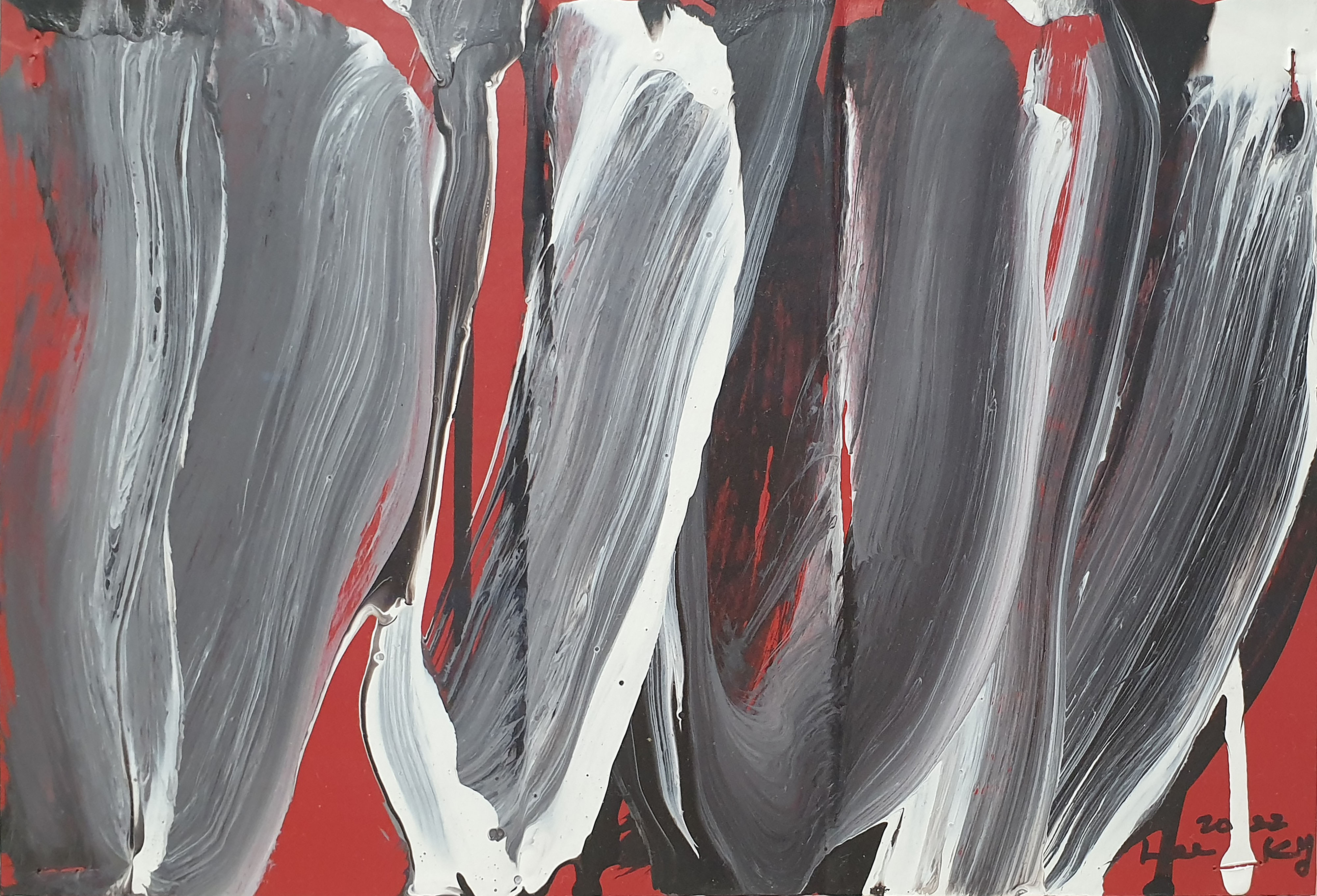우연의 미학
| [GALLERIES] TANG CONTEMPORARY ART
2022. 4. 20 – 5. 28
주 진스

탕 컨템포러리 아트는 주진스(Zhu Jinshi) 개인전 “우연적 미학(Accidental Aesthetics)”을 2022년 4월 20일 서울 공간에서 개최한다. 이번 전시회에서는 작가가 2005년 이후 작업한 추상화를 집중 조명하며 30여점이 넘는 “두터운 회화(thick painting)” 시리즈와 최근 작업한 아크릴 작품들을 선보인다.
영향력 있는 아시아계 현대 예술가로서 20세기 하반기에 두각을 드러낸 주진스는 광범위한 매체와 방법으로 실험을 거듭해 왔다. 주진스는 1979년에 싱싱미전이라는 중국 최초의 현대예술 운동에 참여했고 1980년대에는 추상화와 아파트먼트 전시(apartment exhibition)를 탐구했다. 1986년 독일로 이주한 그는 1990년대부터 설치 작업을 시작했고, 2000년 이후에는 중국의 신표현주의적 추상화 및 대규모 설치 미술에 몰두하고 있다.

주진스의 작품 세계의 중심에는 언제나 추상화가 있었으나 전후 시대에 등장한 수많은 예술 매체와 운동 사이에서 발견되는 미적인 틈새와 구조적 변화에 대한 부분들도 다루고 있다. 추상, 오리엔탈리즘, 설치예술, 개념예술, 대지예술을 조화시키기도 하고 저항하기도 하면서, 그는 전체론적으로 회화에 현대성을 부여할 방법을 고민한다. 주진스는 개념 예술가가 아니다. 그는 형식 미학의 창시자이다. 이음새와 두께, 조망 관점, 유동성, 압축성, 도색의 물질성과 공간성, 그리고 그외의 시각적 형태들이 그의 독특한 회화 스타일을 형성하고 있다. 주진스는 끊임없이 새로운 시각적 한계를 추구하고 우연적 미학을 창조한다.
본 전시회에서는 주진스의 트레이드마크인 두터운 회화를 주로 소개한다. 그는 다양한 도구를 사용하여 큰 덩어리의 두꺼운 유화 물감을 캔버스에 칠한다. 물감을 끊임없이 쌓고, 혼합하고 눌러서 과장된 두께와 강렬한 자국, 공간의 3차원적 감각, 그리고 도색의 물질성을 강조하는 것이다. 이렇게 과부화된 미적, 차원적 관점은 유화 물감과 캔버스의 관계를 전복시키고 시간, 낙하하는 느낌, 그리고 중력 연구에 뿌리를 둔 우연적 미학을 선보인다. 이러한 우연적 특성은 결국 도색의 과부화에 도전한다. 그의 작업들은 거의 마법처럼 예기치 않은 방식의 시각과 특유의 미적 경험을 제공한다. 주진스는 이러한 방식으로 미학의 개념을 확대하였으며, 이는 현대 회화적 돌파구가 되었다.

주진스는 최근 몇 년 동안 작은 사이즈의 두터운 회화 시리즈를 작업했다. 그는 크기가 작은 작업들이 연구해야 할 데이터포인트를 더 많이 제시하고 자신의 회화 체계를 강화한다고 생각했다. 그는 이렇게 말한다. “작가가 평생에 걸쳐 몇 백점의 작품들만 작업한다면, 틀림없이 감정을 표현하거나 단 하나의 디테일을 반복하는 수렁에 빠지게 된다. 내가 지난 3년동안 작업한 작은 사이즈의 작품에서는, 더 이상 두께를 강조하지 않는다. 이미 어떤 규범 내지는 습관이 되어 버리기 때문이다. 이미지의 복잡성, 붓질의 크기, 작업의 방향, 색채의 밝기, 도색 사이의 간격이나 종적 변위 같은 것에 더 중점을 두고있다. 이들이 언어학적 구조를 결정한다.”
크기가 작은 유화가 세밀한 회화 스타일에 대한 주진스의 탐구를 대변한다면, 그의 아크릴 작품은 색의 굴절을 최대한으로 유지하고자 하는 그의 열망을 나타낸다. 그가 희석하지 않은 아크릴 물감을 표면에 직접 도포한 다음 몇 겹 반복해서 칠하면, 물질의 윤기와 빛을 반사하는 성질이 증폭된다. 도색은 유동적인 색감과 레이어 효과에 힘입어 망막에 강력한 인상을 남긴다. 특히 건축학적 공간에 등장하게 되면, 이렇게 거대한 아크릴 작품들의 웅장함 때문에 아크릴 물감의 성질이 더욱 강조된다. 이는 오늘날의 고도로 포화된 시각적 환경을 인용하는 것이기도 하다.
우연적 미학은 언어학적 붕괴와 물질적 열반을 의미한다. 시인 남송 석거간(Beijian Jujian)은 이렇게 적었다. “물질에는 언제나 끝이 있지만 진리는 결코 소진되는 법이 없다. 진주가 있기에 재도 존재하는 것이다.” 복잡한 미지의 현재를 사는 사람들은 단순함으로 회귀하기를 원하고 모든 사물들의 소리가 들려지기를 바란다. 예술의 우연적 가능성, 우연한 만남, 뜻밖의 기쁨이 힐링과 희망의 원천이 될 수 있다.

탕 컨템포러리 아트 서울
서울시 강남구 압구정로 75길
02-3445-8889











